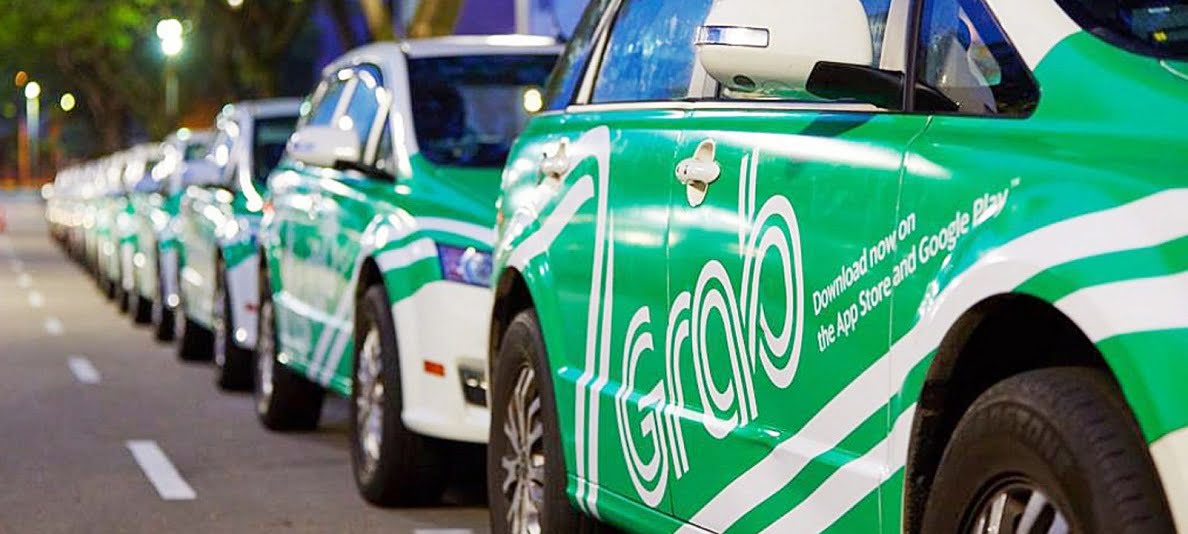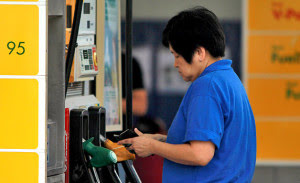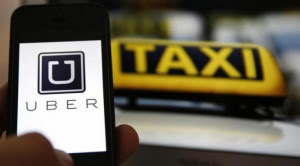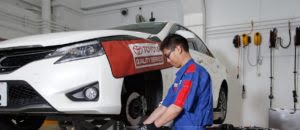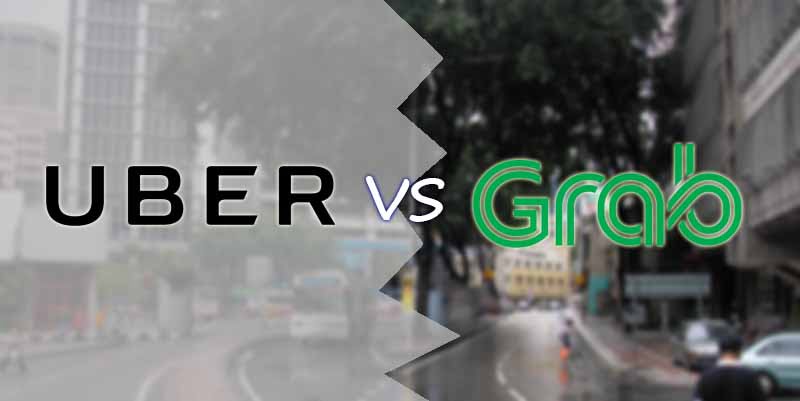
“I love to spend some me-time on the road while being stuck in traffic,” said no one ever.
Based on a recent survey by GlobalWebIndex, 55% of the 1,050 Malaysians polled, said they spend more time in traffic congestions compared to last year.
This makes any convenient, safe and affordable public transportation a boon for Malaysians, because no one wants to be behind the wheel, bumper-to-bumper, every single day. So, what better way to earn some cash offering a service that most Malaysians need?
With Uber and Grab launched in Malaysia in recent years, Malaysians can now make use of these platforms to earn some extra cash.
You need not quit your job to work as Uber or GrabCar drivers, however, with limited time on your hand, you will need to figure out which company pays you more for your time.
Which has higher fare rates & commission
Here’s a comparison of the fare rates and commission for UberX and GrabCar Economy:
UberX
GrabCar
Economy
Commission
25%
20%
Base Fare
RM0.95
RM1.00
Per KM Rate
RM0.60
RM1.30*
Per Minute Rate
RM0.25
RM0.00
* All fares are subjected to flexible pricing due to demand and supply within a certain duration or area.
Based on the basic fare structure above, without per minute rate, GrabCar will be more profitable when the traffic is smooth (read: non-peak hours). However, that is rarely the case in the Klang Valley, hence UberX may be a better platform to earn more when you are chauffeuring passengers around in slow and heavy traffic.
Another significant difference between the two platforms are, during peak hours Uber practises price surging. This happens when many people are trying to request a ride at the same time and the fares surge for a typical duration of a few minutes.
Uber drivers may be able to earn more if they drive during peak hours, where fare surging is common. However, Uber also charges higher commission at 25%, while GrabCar’s commission is only 20%.
How much can you earn based on the same distance and duration of trip for both UberX and GrabCar Economy?
Here’s the breakdown for a trip between 1 Utama Shopping Centre and KL Sentral. The distance via LDP and SPRINT Highway is 14.3km.
Non-peak hours with smooth traffic – about 21 mins
UberX
GrabCar Economy
Base fare
RM0.95
RM1.00
Per KM rate
14.3km x RM0.60
= RM8.58
14.3km x RM1.30
= RM18.59
Per minute rate
21 mins x RM0.25
= RM5.25
RM0.00
Total earnings before commission
RM0.95 + RM8.58 + RM5.25
= RM14.78
RM1.00 + RM18.59
= RM19.59
Total earnings after commission
RM14.78 – 25%
= RM11.09
RM19.59 – 20%
= = RM15.67
Peak hours with heavy traffic – about 40 mins
UberX
GrabCar Economy
Base fare
RM0.95
RM1.00
Per KM rate
14.3km x RM0.60
= RM8.58
14.3km x RM1.30
= RM18.59
Per minute rate
40 mins x RM0.25
= RM10.00
RM0.00
Total earnings before commission
Without price surge
RM0.95 + RM8.58 + RM10.00
= RM19.53
With price surge (1.5x)
RM19.53 x 1.5
= RM29.30
Without price surge
RM1.00 + RM18.59
= RM19.59
With price surge (1.5x)
RM19.59 x 1.5
= RM29.38
Total earnings after commission
Without price surge
RM19.53 – 25%
= RM14.65
With price surge (1.5x)
RM29.30 – 25%
= RM21.97
RM19.59 – 20%
= RM15.67
Based on the simple calculations above, GrabCar is definitely better if the time you can commit to driving for them is during non-peak hours, and traffic is smooth. However, if you are working regular 9-to-5 job, you will most likely be able to drive in the morning and evening rush hours.
If that is the case, there’s not much difference between Uber and GrabCar.
Economy | ||
| Commission | ||
| Base Fare | ||
| Per KM Rate | ||
| Per Minute Rate |
| Base fare | ||
| Per KM rate | = RM8.58 | = RM18.59 |
| Per minute rate | = RM5.25 | |
| Total earnings before commission | = RM14.78 | = RM19.59 |
| Total earnings after commission | = RM11.09 | = = RM15.67 |
| Base fare | ||
| Per KM rate | = RM8.58 | = RM18.59 |
| Per minute rate | = RM10.00 | |
| Total earnings before commission | RM0.95 + RM8.58 + RM10.00 = RM19.53 With price surge (1.5x) RM19.53 x 1.5 = RM29.30 | RM1.00 + RM18.59 = RM19.59 With price surge (1.5x) RM19.59 x 1.5 = RM29.38 |
| Total earnings after commission | RM19.53 – 25% = RM14.65 With price surge (1.5x) RM29.30 – 25% = RM21.97 | = RM15.67 |
How about drivers’ incentives?
Drivers for both Uber and GrabCar do not just earn the fares minus commissions. These companies also offer incentives to their drivers, and these incentives are really where the money is.
Note: incentives change from time to time so it is advisable that you keep updated through their blogs, where they’ll post the latest incentives.
Below are the latest at writing time but you will still need to carefully strategise your working hours to earn the most bucks:
Uber Earnings Boost
 This new scheme replaces the Tier 1 incentive and according to Uber, it is meant to keep guarantees super simple.
So how this work is the Uber app will show all areas with high demand and if you drive during those busy hours, you’ll earn extra per trip. Also the earnings boost is not subject to the 25% service fee.
In the event when there is both surge and Uber Earnings Boost, Uber will always pay out the higher multiplier out of the two to make sure that you maximise your potential earnings while driving.
Based on the example of a trip between 1 Utama Shopping Centre and KL Sentral, via LDP and SPRINT Highway (14.3km), a rough breakdown would be something like this:
This new scheme replaces the Tier 1 incentive and according to Uber, it is meant to keep guarantees super simple.
So how this work is the Uber app will show all areas with high demand and if you drive during those busy hours, you’ll earn extra per trip. Also the earnings boost is not subject to the 25% service fee.
In the event when there is both surge and Uber Earnings Boost, Uber will always pay out the higher multiplier out of the two to make sure that you maximise your potential earnings while driving.
Based on the example of a trip between 1 Utama Shopping Centre and KL Sentral, via LDP and SPRINT Highway (14.3km), a rough breakdown would be something like this:
Rider’s fare: RM14.78 Earnings guarantee: RM14.78 x 1.8 (earnings boost) = RM26.60 Total received: RM11.09 (fare of RM14.78 less 25% service fee) + RM15.52 (earnings boost) = RM26.61
Now, let’s have a look at what GrabCar is offering:
The Grab-Pro Programme
To be eligible for incentives, drivers must fulfil these criteria:
UberX
GrabCar Economy
Trip acceptance rate:
None
A minimum of 88%
Driver cancellation rate:
None
Maximum cancellation of 10%
Average driver rating:
None
4.4 stars and above.
Trip completion rate:
None
50% of busy areas.
Applicable locations:
Area with UBER Boost
KLIA, KLIA2 and Klang Valley.
UberX
GrabCar Economy
Hours
Mon – Fri
6am – 10am
Mon – Fri
6am – 10am
Total no. of trips per day
1.5 trips x 4 hours
= 6 trips
1.5 trips x 4 hours
= 6 trips
Total earnings from
fare per day
RM14.10* x 6 trips
= RM84.60
RM15* x 6 trips
= RM90
Total incentive per day
Earning boost
RM84.60 x 1.5
= RM126.90
4 hours x RM30
= RM120
Commission deduction
RM84.60 – 25%
= RM63.45
Total incentive
RM42.30 + RM63.45
= RM105.75
Gross incentive:
Mon = RM138
Tue – Fri = RM116
= RM120.40
Net incentive:
RM120.40 = RM96.32
Total earnings from
fare per month
RM105.75 x 20 days
= RM2,115
RM96.32 x 20 days
= RM1,926.40
* Assuming earning per trip at RM18.80 (before deduction of commission).
^ Based on this example, GrabCar driver will only be eligible for Tier 4 incentive for Friday.
The trips calculated for incentive is only based on the weekly unique passenger count.
Yes, there seems to be quite a lot of terms and conditions to contend to for GrabCar. The new incentive programme by UberX seems to be more lucrative for the driver as the incentive is not deductible for commission.
The drawback to the new Uber Earning Boost is, you don’t get incentive all the time. Drivers will receive and email detailing the Earning Boost hours for the week, while the app only shows the hours for the day. This means less flexibility for the drivers to maximise their earnings, especially if they have a full-time job.
 This new scheme replaces the Tier 1 incentive and according to Uber, it is meant to keep guarantees super simple.
This new scheme replaces the Tier 1 incentive and according to Uber, it is meant to keep guarantees super simple.| Rider’s fare: | RM14.78 |
| Earnings guarantee: | RM14.78 x 1.8 (earnings boost) = RM26.60 |
| Total received: | RM11.09 (fare of RM14.78 less 25% service fee) + RM15.52 (earnings boost) = RM26.61 |
| Trip acceptance rate: | ||
| Driver cancellation rate: | ||
| Average driver rating: | ||
| Trip completion rate: | ||
| Applicable locations: |
| Hours | 6am – 10am | 6am – 10am |
| Total no. of trips per day | = 6 trips | = 6 trips |
| Total earnings from fare per day | = RM84.60 | = RM90 |
| Total incentive per day | RM84.60 x 1.5 = RM126.90 4 hours x RM30 = RM120 Commission deduction RM84.60 – 25% = RM63.45 Total incentive RM42.30 + RM63.45 = RM105.75 | Mon = RM138 Tue – Fri = RM116 = RM120.40 Net incentive: RM120.40 = RM96.32 |
| Total earnings from fare per month | = RM2,115 | = RM1,926.40 |

